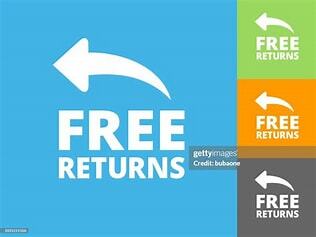HOW TO DETERMINE VALUE WITH LEATHER PRODUCTS
Not all leather is the same, obviously, and not all products made from leather are the same.
Lots of marketing spin, large variety of choices and a wide range of prices for seemingly the same product. Why are some products priced low and why are others priced higher?
What questions should be asked when shopping / evaluating /purchasing a fine leather product?
- Where is it made and why is that important?
- Is what you are looking at made onshore in the US by actual artisans?
- Or is it "designed" in the US and manufactured in a factory offshore?
- When local artisans make fine leather products they do so with passion and expertise and have "skin in the game";
- When leather products are made elsewhere in environments where the actual production is a disconnected supply chain, this is mainly about costs and not quality.
- What is it made from and why is that important? (See below)
- How it the product actually constructed? (Also see below)
- Does the vendor you are considering provide true customer support? Meaning, does a skilled artisan answer the phone or email without a lot of people to go through?
In the end it comes down to a few very simple things:
-
Materials:
-
Not all leather is the same. It starts with the original cow hide. The overall best considered cow hides comes from the North American Jumbo Steer.
-
Grades. Cow hides are a by-product of the meat industry. When the hides are harvested, they are not all the same in terms of quality, defects and strength. So, they are graded and are not all the same. #1 hides are the best cow hides from the North American Jumbo Steer. These are the hides we use that you can see on our site.
- Processing. How a cow hide is processed determines its overall quality. Principally there are two methods of turning a hide into leather. The most popular method uses chemicals, mainly hexavalent chromium to achieve this. The better method is to use tree bark. The chemical method is called chrome tanning. As consumers have become more aware of both how leather is made and environmental concerns, some tanneries add additional substances to the chemical process and some use different terms like "Re-Tanned" or "Oil-Tanned". These new terms are still a chemical process. The organic process is called vegetable tanning. It takes longer, typically 14 days just to complete the tanning process, which is just the first step in creating premium leather versus one day for the chemical tanning process typically. Once a cow hide has been tanned it then is dyed and finished. The chemical tanning process typically completes the entire process in 1 to 2 weeks. A vegetable (organic) cow hide completes the tanning process typically takes 4 to 6 weeks. You might ask "why take so long, isn't the faster process better?" No faster is not better. The slower and environmentally sustainable process of vegetable tanning actually produces stronger, more attractive and more durable leather.
-
The leather used in all of our products comes from a USA tannery (Wickett and Craig in Pennsylvania). We purchase hides and build our products from the hide up.
-
Construction. Simple and apparently small things can make a huge difference:
-
Like the thread used to sew a leather product together.
-
We use some of the strongest thread on the market.
-
Designed, for strength and longevity.
-
Double sewing stress points.
-
Riveting parts that will carry weight in addition to double sewing.
-
When we say that we design and construct all of our items to be better, we consider ALL parts and components that as a whole make up the product.
-
We do not want to make something faster and therefore design products to make it easier to construct. We seek and actually do think about every component that goes into the products we make to deliver items that are built for strength, functionality and durability. These are not slogans for us but actual principals we work by.
-
We build products one order at a time in east Tennessee. The vast majority of raw materials that goes into each product is USA made. By building to order we can offer options that purchasers can choose at order time without adding additional cost. Like a wide variety of colors.
-
Our goals are to build items that last, are attractive are easy to use and are made by hand in east Tennessee.
-
SUPPORT:
-
We support what we build.
-
30-day return policy. That has not been used all that much. Which says a lot.
-
We often make changes based on customer feedback.
-
Purchasers can call us or email us, and we will respond.
-
DESIGN:
-
Some people prefer to get quality leather products from named designers. We are OK with that. Variety in the marketplace is helpful and we like to see all who focus to quality to participate.
-
We often suggest that potential purchasers examine the above listed areas to see EXACTLY what goes into the item they are considering.
-
Where a product is made, more often than not, determines the level of quality. We are not suggesting that only products made by us in east Tennessee are the best. But have noticed that large production runs that are often done offshore with low-cost labor in large factories does not produce better quality.




